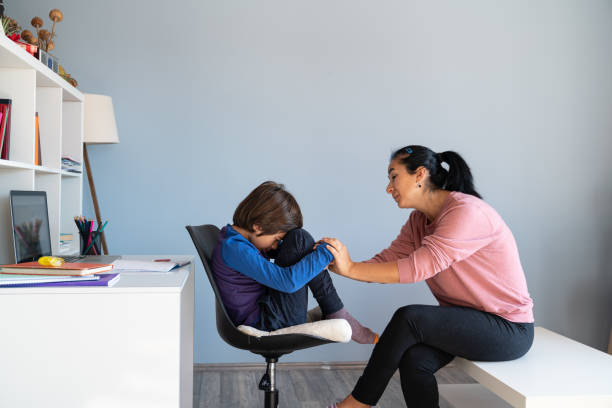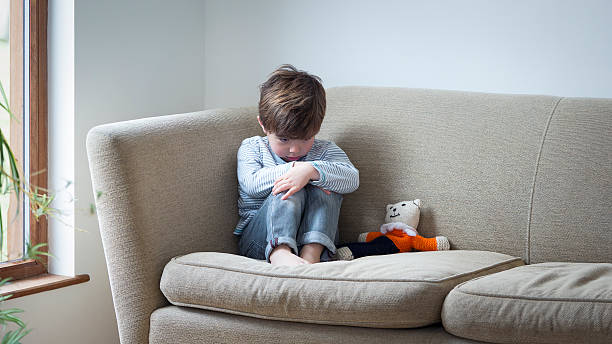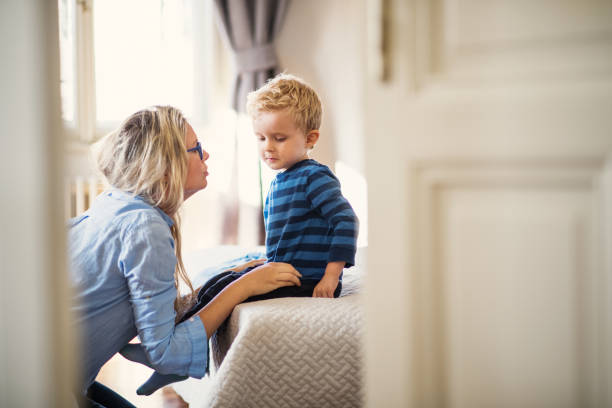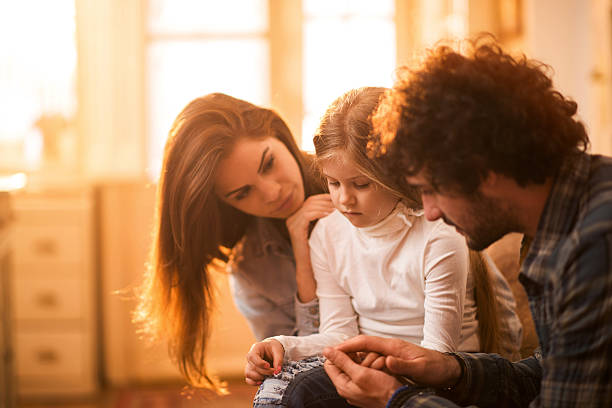Although children are born with the ability feel emotions, they don’t have the same ability to express those emotions verbally or clearly as us. As a result, we end up with tantrums and confusing behavior. Even a child who is sad and overwhelmed by her sad child feelings, this principle holds true.
Perhaps she was angry with a friend or lost a toy. She didn’t do the right thing, wasn’t able to do what she wanted or missed you while you were at work.
It could be even more severe and last longer, such as a family split, the loss of a pet or the move to a new school.
Sometimes you don’t even know why she is feeling so sad. These days she has been more quiet about things that would ordinarily make her happy.
6 Tips for Helping your Sad Child
You may feel a lot of conflicting emotions when you see your child sad. If she isn’t able to get over it, you may be worried that something is wrong. You would rather her be happy and cheerful than sad and depressed. You might feel that you are making her feel worse by saying the wrong things.
It is enough to make you wonder if you are doing the right thing, or if you are just making things worse.
You are my friend. My priority is to talk with my children about their feelings. I want my children to be able to talk about their feelings and to learn how to deal with them.
You can help your child deal with the sad feelings she is feeling, regardless of whether you know why or not. Here’s how:
1. Do not dismiss the Sad Child
As we were walking back from school, my son accidentally dropped a leaf while crossing the street. I replied, “We’ll get more.” When I thought I would add “It’s just one leaf”, I realized it would negate his feelings.
Although we can’t overlook major losses such as divorce or death, it is easy to ignore a broken toy and a lost leaf. These small or insignificant losses can be a source of genuine sadness for our children, no matter how silly or trivial they may seem.
Instead, accept your child’s behavior and not judge it as insignificant or petty. Even if the feeling is over a dropped leaf, admit it.
Listen without judgment. This allows her to tell you the truth without being judged. You should actually thank her for sharing how she feels so that she knows you are there for her.
Free resource: The Power of Empathy is a free resource that teaches you how empathy can make a big difference in your interactions with your children. Get your free PDF here. You will also receive my newsletters which parents love:
2. Label your Feelings
The power of words is powerful. Your child can use the simple act to label her feelings and gain control over her sadness.
It is possible that she may not be able express the strange sensations of feeling her heart clench or the need to be alone, but it’s possible. It can be helpful to label her and say “It looks as if you’re feeling sad” to help her recognize her sadness and assure her that she is not the only one feeling it. She will learn to label her sad child emotions and realize that they aren’t her identity.
She is aware that she can feel sad, but she doesn’t fear feeling this way constantly. She will not blame herself or think she is bad because she doesn’t feel happy. She will understand that your emotions are temporary and won’t last forever.
3. Let it be known that sadness is normal
It’s possible for your child to believe she is the only one who feels sad or anxious. Explain to your child that sadness is common for everyone, even you. You can make her feel less isolated and lonely if you tell her how common sadness is. It’s not an easy feeling to experience, but it is one that we all feel.
Give us an example of a time when you felt sad. Perhaps you can share a recent disappointment or your sad child feelings.
She will not only be able to understand that everyone experiences sadness from time-to-time, but also that it is something that all of us experience throughout our lives. This can help her feel normal. She can also cope just like you and other people do.
4. Remember to tell your child that this feeling will pass
It can feel like the world is never ending when we are sad. You can think back to heartbreak, loss, and even those newborn months when it seemed like the end was not near. The increased physical sensations, such as a tight stomach or tight muscles, don’t help.
However, sadness is a normal emotion that will pass. Remember to tell your child that sadness does not last forever and that she will feel happy again. Consider feelings as seasons. They are like all seasons.
5. Do not rush your child to get rid of her emotions
When dealing with sad children, one of the most common parenting mistakes is to try and rush them out of their emotions.
We understand that they don’t want to feel down. Sometimes, it can be hard for us to watch their struggles. It is easier to spend time with them when you are happy than when you feel sad.
However, rushing your child to get rid of her emotions can actually make it worse or prevent the feelings from passing. Although we can help ease the pain, it doesn’t solve the original problem.
It is tempting to coerce, threaten, or distract her from her sadness. But, it is better to be patient than sorry. Allow her to feel and sort her emotions. It’s not easy to feel sad. But these moments can be so valuable for her.
6. Provide ways to get rid of Sad Child Ness
You don’t have to push your child to get over her negative emotions, but you can offer different options for her to not feel so sad.
Send her a hug, comfort her with kisses and encouraging words. Listen without judgment and don’t make light of the things she is crying about. Instead of saying, “It’s just one leaf, we can always buy another one,” say, “You feel sad that you lost that leaf. It was something you really loved and it is gone.
Once she is ready, you can suggest other ways she can deal with sadness. Ask her if you can talk to her about it, or if she would like to go on a walk to look for another leaf. You can provide sensory comforts such as rice, clay, and sand. Relax with a blanket and just be together.
Encourage her to enjoy simple pleasures by telling her about her favorite snack or how you will be taking a walk in the park later in your day. These aren’t meant for her to forget or ignore her sadness. However, simple pleasures can remind her of other joys in life.




